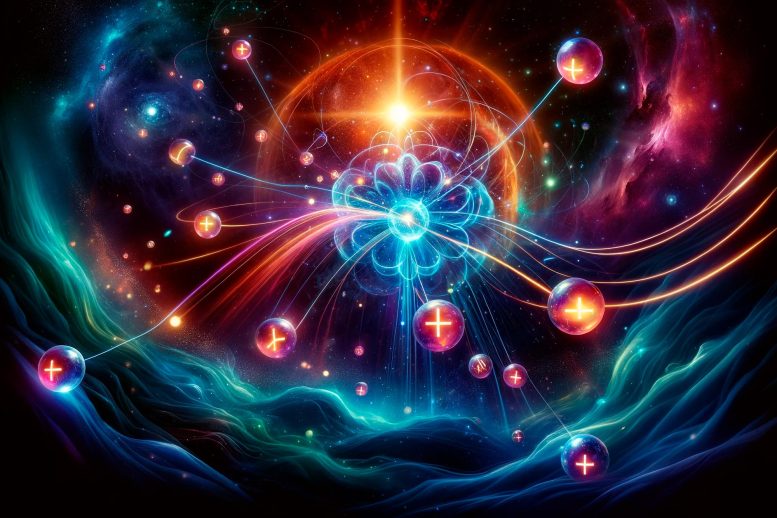
A collaborative study has introduced a novel method for modeling essential low-energy nuclear reactions in stars. By examining the outcomes of these reactions, researchers have formulated a new predictive model, enhancing our understanding of elemental formation in the universe.
New research offers an innovative approach to model star-based elemental formation, improving our grasp of nuclear reactions in the cosmos.
New research from North Carolina State University and Michigan State University opens a new avenue for modeling low-energy nuclear reactions, which are key to the formation of elements within stars. The research lays the groundwork for calculating how nucleons interact when the particles are electrically charged.
Understanding Elemental Formation in Stars
Predicting the ways that atomic nuclei – clusters of protons and neutrons, together referred to as nucleons – combine to form larger compound nuclei is an important step toward understanding how elements are formed within stars.
Since the relevant nuclear interactions are very difficult to measure experimentally, physicists use numerical lattices to simulate these systems. The finite lattice used in such numerical simulations essentially acts as an imaginary box around a group of nucleons that enables physicists to calculate the properties of a nucleus formed out of these particles.
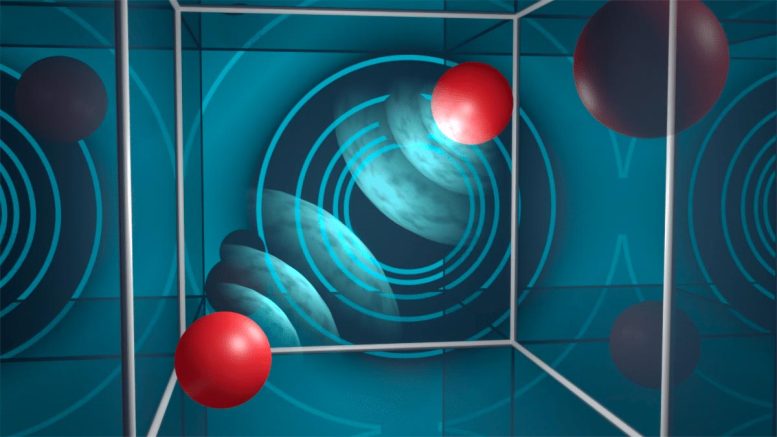
Researchers from North Carolina State University and Michigan State University have developed a new method for modeling low-energy nuclear reactions, vital for understanding element formation in stars. Their approach involves analyzing the end products of reactions within a numerical lattice to deduce reaction properties. This has led to a new formula that improves predictions for these nuclear reactions, offering deeper insights into the processes that synthesize elements in the cosmos. Credit: Sebastian Koenig
Challenges in Low-Energy Reaction Simulation
However, such simulations have so far lacked a way to predict properties that govern low-energy reactions involving charged clusters arising from multiple protons. This is important because these low-energy reactions are vital to element formation in stars, among other things.
“While the ‘strong nuclear force’ binds protons and neutrons together in atomic nuclei, the electromagnetic repulsion between protons plays an important role in the nucleus’ overall structure and dynamics,” says Sebastian König, assistant professor of physics at NC State and corresponding author of the research.
“This force is particularly strong at the lowest energies, where many important processes take place that synthesize the elements that make up the world we know,” König says. But it is challenging for theory to predict these interactions.”
A New Approach to Nuclear Reaction Analysis
To address this, König and colleagues decided to work backward. Their approach looks at the end result of the reactions within a lattice – the compound nuclei – and then backtracks to discover the properties and energies involved in the reaction.
“We aren’t calculating the reactions themselves; rather, we’re looking at the structure of the end product,” König says. “As we change the size of the ‘box,’ the simulations and results will also change. From this information, we can actually extract parameters that determine what happens when these charged particles interact.”
“The derivation of the formula was unexpectedly challenging,” adds Hang Yu, graduate student at NC State and first author of the work, “but the final result is quite beautiful and has important applications.”
Development of a New Predictive Formula
From this information the team developed a formula and tested it against benchmark calculations, which are evaluations done via traditional methods, to ensure the results were accurate and ready to be used in future applications.
“This is the background work that tells us how to analyze a simulation in order to extract the data we need to improve predictions for nuclear reactions,” König says. “The cosmos is enormous, but to understand it you have to look at its tiniest components. That’s what we’re doing here – focusing on the small details to better inform our analysis of the bigger picture.”
Reference: “Charged-Particle Bound States in Periodic Boxes” by Hang Yu, Sebastian König and Dean Lee, 21 November 2023, Physical Review Letters.
DOI: 10.1103/PhysRevLett.131.212502
The work appears in Physical Review Letters and was supported by the National Science Foundation and by the U.S. Department of Energy. NC State graduate student Hang Yu is first author. Dean Lee, professor of physics and theoretical nuclear science department head at the Facility for Rare Isotope Beams at Michigan State University, co-authored the work. Lee was formerly at NC State and remains an adjunct professor of physics at NC State.
Abstract:
We consider the binding energy of a two-body system with a repulsive Coulomb interaction in a finite periodic volume. We define the finite-volume Coulomb potential as the usual Coulomb potential, except that the distance is defined the shortest separation between the two bodies in the periodic volume. We investigate this problem in one and three-dimensional periodic boxes and derive the asymptotic behavior of the volume dependence for bound states with zero angular momentum in terms of Whittaker functions. We benchmark our results against numerical calculations and show how the method can be used to extract asymptotic normalization coefficients for charged-particle bound states. The results we derive here have immediate applications for calculations of atomic nuclei in finite periodic volumes for the case where the leading finite-volume correction is associated with two charged clusters.

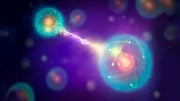


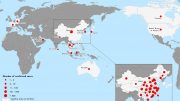
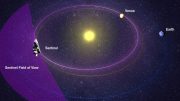


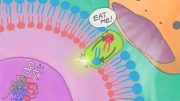
According to topological vortex gravitational field theory, the interaction and balance of topological vortices cover all long-distance and short-range contributions of spacetime motion, and are the foundation of the evolution of spacetime material motion. Stars and charged particles have similar physical formation mechanisms.
CP violation is a pseudoscientific theory spread by Physical Review Letters (PRL).
Today, CP violation has been viewed by contemporary physics as the key to a deeper understanding of both the behaviour of elementary particles and the Big Bang origin of the universe. Here is an introduction to the CP violations by Proceedings of The National Academy of Sciences (PNAS).
1. If CP-symmetry is not violated, then the matter and antimatter that would have been produced in equal amounts in the early universe would have been annihilated, leaving behind only radiation, whereas theories with CP-violation can explain why, as the universe evolved, a little more matter survived than antimatter, and that makes up the matter we see.
2. There’s strong evidence that elementary particles called quarks (which constitute protons and neutrons) do violate CP-symmetry. The first indication of this came in 1964, when Val Fitch and James Cronin at the Brookhaven National Laboratory discovered violations of CP-symmetry in the decay of K-mesons, which are composed of one type of quark and another type of antiquark. Fitch and Cronin were awarded the Nobel Prize in Physics in 1980 for their efforts.
3. Still, the amount of violation is not enough to explain the excess of matter. So, physicists have begun looking for CP-violation in other classes of particles, such as leptons, the group which includes electrons and neutrinos, among others.
Experiments around the world are looking for signs of the charge conjugation and parity (CP) symmetry violation. However, in scientific research, falsifiable is more important than confirmation. If the topological vortex and its twin anti-vortex conform to the physical characteristics of matter and anti-matter, no one believes that in topological phase transition, a little more matter survived than antimatter.
This is the hypocrisy, dirtiness, and ugliness of contemporary physics and so-called academic journals.
If you are really interested in science, you can browse the comments of the https://scitechdaily.com/microscope-spacecrafts-most-precise-test-of-key-component-of-the-theory-of-general-relativity/.
I hope more people dare to stand up and fight against the rampant pseudoscience.
Good luck to you all.